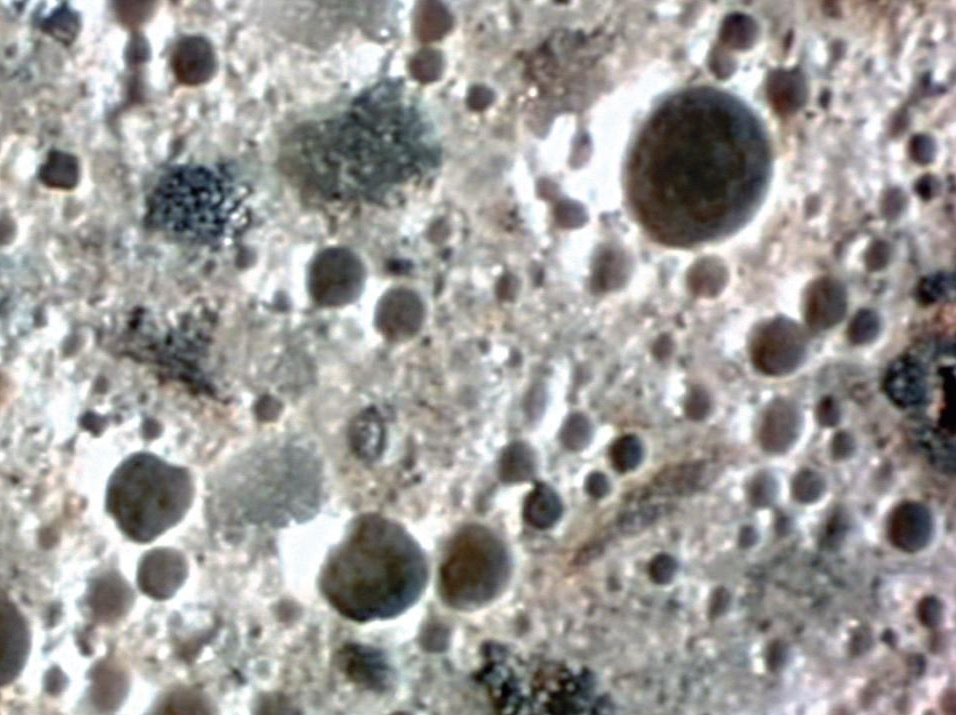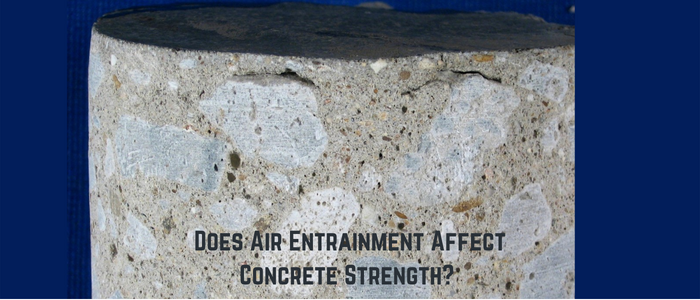Entrained air in concrete is a crucial topic when speaking of concrete serving in locations exposed to freezing-thawing cycles. We have a detailed article that discuss this topic. You can check it here.
ENTRAINED AIR IN CONCRETE [FULL GUIDE]
Briefly, air entrainment is used to develop what we call “Air Entrained Concrete“.
Air Entrained Concrete?!
We know that normal concrete is made of cement paste that surrounding the fine and coarse aggregates. Air entrained concrete uses the same materials as normal concrete but also has one additional material that makes the difference.
This material is the air-entraining admixtures.
Usually, this admixture comes in liquid form. It gets mixed with the mixing water and then added to cement and aggregate.
This air-entraining admixtures has the ability to create billions of microscopic air bubbles in concrete (which we call air entrainment), hence the name air entrained concrete.

This is a short post on how these air bubbles affect the strength of concrete. We will speak of compressive and flexural strengths.
Effect of Air Entrainment on Compressive Strength
Although air entrainment has a beneficial effect in resisting the damage caused to concrete by the freezing/thawing cycles, it has a negative effect on the compressive strength of concrete.
Why is this negative effect?
To answer this question, imagine a solid cube of steel that does not contain any voids inside. Assume you tested it for compressive strength and you obtained a value of 300 MPa.
Now, what happens if you got a cube from the same material and dimensions (all variables are constant) but with only one variation. This variation is the internal voids. So, instead of having a solid cube, now you have a cube that is mostly solid but with some internal voids within.
If you decided to test that cube for compressive strength, I promise you will get a lower value than the 300 MPa obtained for the first cube.
The reason is simple and it is the voids, which make a less dense cube with less solid material available to resist the load.
Now, let us go back to our topic with the same concept in mind.
The additional air that we add into concrete will cause a reduction in the strength of concrete.
According to the American Concrete Institute (ACI), the following figure is introduced that highlights the less strength obtained for air entrained concrete using the same parameters.

There is a rough range that we can use a guideline on how the air reduces the strength. Research has shown that there is almost a 5% reduction in compressive strength for each 1% increase in volume of air.
So, the previous equation can be changed into:
Target mean strength = Characteristic strength + Margin / (1-0.055 a)
where a is the intended volume of air in concrete.
There is a short note here to keep in mind. You know that there is an inverse relationship between the workability of concrete and strength only if the workability is obtained by the addition of water. This is because the extra water increases the water-to-cement ratio and thus reduces strength.
However, when we add air entrainment, the workability usually increases but this does not come over the expense of concrete strength reduction. Yes, the compressive strength will decrease due to air entrainement but it is not because the workability increase.
Effect of Air Entrainment on Flexural Strength
We expect the same effect of air entrainment on the flexural strength as the compressive strength. In fact, research has verified this. But some studies found slight enhancement in flexural strength. For example this is an excerpt from an abstract of a study that reported this enhancement:
The flexural strength and frost resistance properties of air entrained concrete were tested in this study. Although the flexural strength of concrete does not change largely with increasing of air content, it still has a maximum value with air content of 4%. The test results show that the frost resistance increase with increasing of air content.
